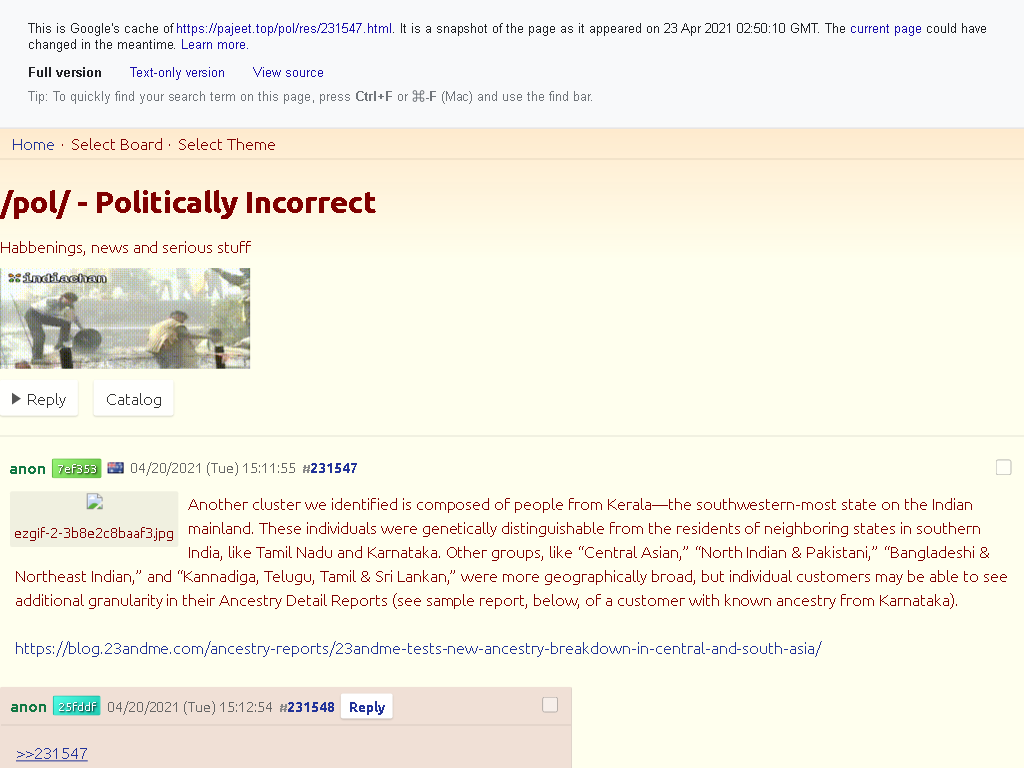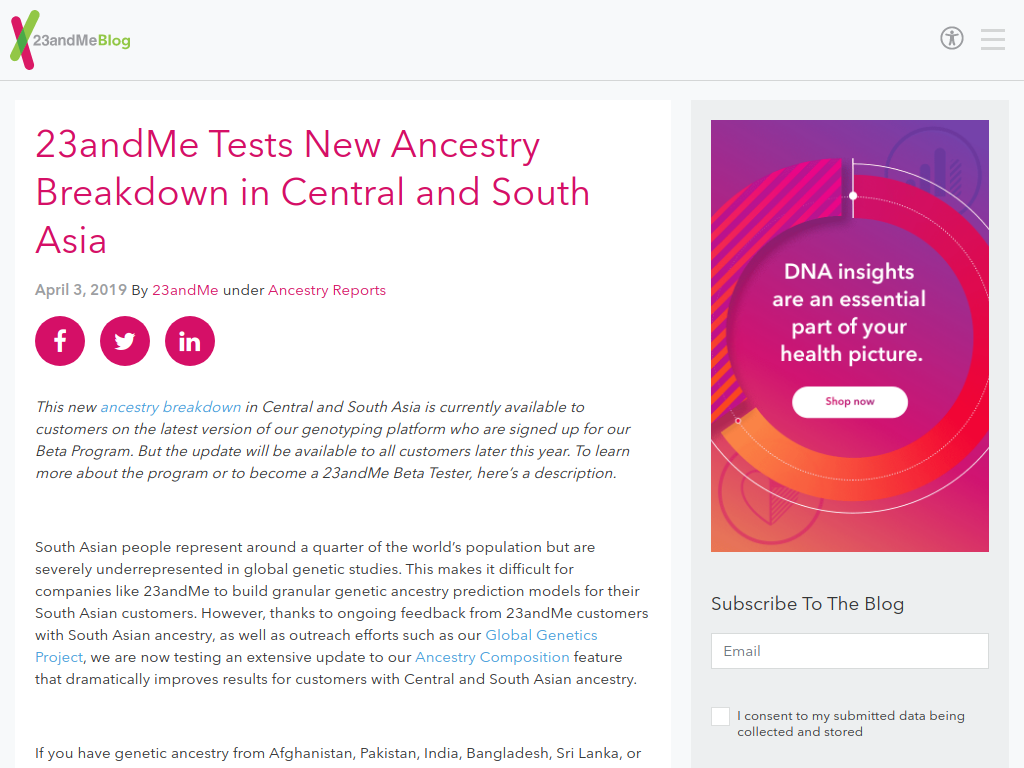viklewapatel
Regular Member
- Joined
- Oct 30, 2021
- Messages
- 159
- Likes
- 76
See Response to Comment:
You're right about the "high Iran N" score but as far as the "high AASI" and "zero steppe", mine is showing exactly the opposite: "high Steppe" and "low AASI".
Mind you, I belong to the Gujarati Lewas so, a natural question to ask is:
“Patel etle keva?” or what type of Patels are we talking about here?
Similar to what this 'Shah' encountered:
The different 'Patel' sub-castes are different castes.
Or are we talking about all those belonging to other castes but who have adopted the surname of Patel?

Go ask Azim Premji if he'd accept anything other than an authentic Lewa Patidar lineage for his son Rashad or into their bloodline.
Patidars are known as Patel by the Gujarati population at large and outside the caste there seems to be little knowledge that there are different kinds of Patels, of whom the Patidar is just one group. It is also commonly said that Patels as a group of sub-castes like gold and at their weddings gold will be expected to be given by both the groom's and the bride's families.
Similarly, Parmar’s recent study in Gujarat traces how SCs change their surnames (which signal caste affiliation) in desperation to access better housing, employment and educational opportunities.:
One thing is for sure though. Those reporting "high" (by Indian standards) Steppe or Euro_HG ancestry (10-15%) are also reporting much higher AASI ancestry (over 30%). The following examples illustrate this observation.
The first one is from a "Kshatriya from Maharashtra":
Indian Illustrative DNA results
IVC 52.0%
AASI 32.8%
Sintashta 11.4%
Euro_HG 10.8%
Having around 11-12 percent Euro European Hunter-Gatherer ancestry is apparently "too high" by Indian standards:
https://www.theapricity.com/forum/sh...=1#post7512630
http://abahlali.org/files/Gidwani.pdf
Regarding the fluidity of the caste structure, it should be pointed out that the Lewas replaced the Rajputs as the ruling group in central Gujarat. L. S. Vishwanath, (2000), Female Infanticide and Social Structure.
According to the Vedic tradition, each of the four varnas has a distinct set of roles and a distinct system of values. In Gujarat, however, through historical coincides, assimilation, and conscious emulation, the Brahmin and Vaishya varnas have come to project very similar images. Fundamental similarities between the culture of Gujarat' Brahmins and that of her Jain Vaishyas had probably emerged by the eighth century reign of Sidh Raj. With Kshatriyas no longer dominant, Brahmins and Vaishyas constituted the pinnacle of the varna hierarchy in Hindu Gujarat.
As pointed out by Jacobs et al. (2000), the Gujarati Triumvirate consists of the three upper castes of Patels/Patidars, Vaniyas/Banias and Brahmins.
Takashi notes that Brahmins and Banias, including Jains and Patidars, are found to be owners in all types of industries in all districts, though their concentration is highest in central Gujarat.
The Routledge Handbook of the Other Backward Classes:
You're right about the "high Iran N" score but as far as the "high AASI" and "zero steppe", mine is showing exactly the opposite: "high Steppe" and "low AASI".
Mind you, I belong to the Gujarati Lewas so, a natural question to ask is:
“Patel etle keva?” or what type of Patels are we talking about here?
Similar to what this 'Shah' encountered:
https://archive.ph/5GlGO#selection-445.181-445.485I was asked a specific question: “Shah etle keva?” or what type of Shah I was.
The different 'Patel' sub-castes are different castes.
Or are we talking about all those belonging to other castes but who have adopted the surname of Patel?

Go ask Azim Premji if he'd accept anything other than an authentic Lewa Patidar lineage for his son Rashad or into their bloodline.
Patidars are known as Patel by the Gujarati population at large and outside the caste there seems to be little knowledge that there are different kinds of Patels, of whom the Patidar is just one group. It is also commonly said that Patels as a group of sub-castes like gold and at their weddings gold will be expected to be given by both the groom's and the bride's families.
https://www.google.com/books/edition...sec=frontcoverThe word 'Patel' does not have caste or religious connotations. ... I have met Pakistanis and people from Bihar and Uttar Pradesh with Patel surname. The vast majority, however, ...
https://archive.ph/5GlGO#selection-473.0-473.68While there could be some error in correlating surnames with castes...
Similarly, Parmar’s recent study in Gujarat traces how SCs change their surnames (which signal caste affiliation) in desperation to access better housing, employment and educational opportunities.:
https://archive.ph/1sNKA#selection-5155.11-5163.560The study describes the systematic discrimination faced by SCs and Muslims in accessing rental housing or purchasing homes in neighbourhoods and caste-based cooperative housing communities dominated by Patels (a common surname of the Patidar caste) and by Brahmins (considered, like Patidars, a privileged caste in Gujarat). Like Nagraj Hettur’s experience in urban Karnataka, the barriers SCs face in Gujarat vary from outright refusal (or builders/landlords lying about the availability of apartments for purchase/rent) to being quoted higher rental prices.
One thing is for sure though. Those reporting "high" (by Indian standards) Steppe or Euro_HG ancestry (10-15%) are also reporting much higher AASI ancestry (over 30%). The following examples illustrate this observation.
The first one is from a "Kshatriya from Maharashtra":
Indian Illustrative DNA results
IVC 52.0%
AASI 32.8%
Sintashta 11.4%
Euro_HG 10.8%
Having around 11-12 percent Euro European Hunter-Gatherer ancestry is apparently "too high" by Indian standards:
https://www.theapricity.com/forum/sh...=1#post7512630
Vinay K. Gidwani (2008), Capital, Interrupted, 4. Distinction, p.326.The caste hierarchy in Kheda begins with various subcastes of Brahmins, after which, in descending order of ritual status, follow Rajput Garasias, Vanias, Patels, Panchals, Kolis and Baraiyas, and Bharwads. Vankars, Rohits, Vaghris, and Bhangis—in that order of ranking—constitute the so-called Scheduled Castes, who were previously labeled (and are still treated in villages as) “Untouchables.”
http://abahlali.org/files/Gidwani.pdf
Regarding the fluidity of the caste structure, it should be pointed out that the Lewas replaced the Rajputs as the ruling group in central Gujarat. L. S. Vishwanath, (2000), Female Infanticide and Social Structure.
According to the Vedic tradition, each of the four varnas has a distinct set of roles and a distinct system of values. In Gujarat, however, through historical coincides, assimilation, and conscious emulation, the Brahmin and Vaishya varnas have come to project very similar images. Fundamental similarities between the culture of Gujarat' Brahmins and that of her Jain Vaishyas had probably emerged by the eighth century reign of Sidh Raj. With Kshatriyas no longer dominant, Brahmins and Vaishyas constituted the pinnacle of the varna hierarchy in Hindu Gujarat.
As pointed out by Jacobs et al. (2000), the Gujarati Triumvirate consists of the three upper castes of Patels/Patidars, Vaniyas/Banias and Brahmins.
https://www.google.com/books/edition...sec=frontcoverIn terms of caste hierarchy , the various Brahmin jatis ( sub - castes ) —Audich , Anavil , Modh and Nagar – occupy the topmost rung , followed by the other ' twice - born ' caste groups such as Banias , Rajputs and Patidars .
Takashi notes that Brahmins and Banias, including Jains and Patidars, are found to be owners in all types of industries in all districts, though their concentration is highest in central Gujarat.
The Routledge Handbook of the Other Backward Classes:
https://www.google.com/books/edition...sec=frontcoverKHAM as an alliance, unsettled the upper castes and classes, represented by Patels/Patidars, Vaniyas and Brahmins, who were the beneficiaries of their colonial connections. ... the Brahmin-Bania-Patidar combine acquired a savarna unity.








